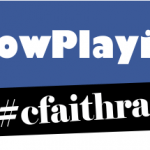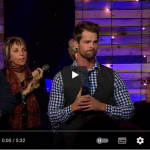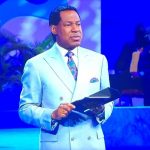1
Lord, speak to me that I may speak
in living echoes of your tone.
As you have sought, so let me seek
your erring children, lost and lone.
2
O lead me, Lord, that I may lead
the wandering and the wavering feet.
O feed me, Lord, that I may feed
your hungering ones with manna sweet.
[ads1]
3
O teach me, Lord, that I may teach
the precious truths which you impart.
And wing my words that they may reach
the hidden depths of many a heart.
4
O fill me with your fullness, Lord,
until my very heart o’erflow
in kindling thought and glowing word,
your love to tell, your praise to show.
5
O use me, Lord, use even me,
just as you will, and when, and where
until your blessed face I see,
your rest, your joy, your glory share.
Short Name: Frances R. Havergal
Full Name: Havergal, Frances Ridley, 1836-1879
Birth Year: 1836
Death Year: 1879
Havergal, Frances Ridley, daughter of the Rev. W. H. Havergal, was born at Astley, Worcestershire, Dec. 14, 1836. Five years later her father removed to the Rectory of St. Nicholas, Worcester. In August, 1850, she entered Mrs. Teed’s school, whose influence over her was most beneficial. In the following year she says, “I committed my soul to the Saviour, and earth and heaven seemed brighter from that moment.” A short sojourn in Germany followed, and on her return she was confirmed in Worcester Cathedral, July 17, 1853. In 1860 she left Worcester on her father resigning the Rectory of St. Nicholas, and resided at different periods in Leamington, and at Caswall Bay, Swansea, broken by visits to Switzerland, Scotland, and North Wales. She died at Caswall Bay, Swansea, June 3, 1879.
Miss Havergal’s scholastic acquirements were extensive, embracing several modern languages, together with Greek and Hebrew. She does not occupy, and did not claim for herself, a prominent place as a poet, but by her distinct individuality she carved out a niche which she alone could fill. Simply and sweetly she sang the love of God, and His way of salvation. To this end, and for this object, her whole life and all her powers were consecrated. She lives and speaks in every line of her poetry. Her poems are permeated with the fragrance of her passionate love of Jesus.
Her religious views and theological bias are distinctly set forth in her poems, and may be described as mildly Calvinistic, without the severe dogmatic tenet of reprobation. The burden of her writings is a free and full salvation, through the Redeemer’s merits, for every sinner who will receive it, and her life was devoted to the proclamation of this truth by personal labours, literary efforts, and earnest interest in Foreign Missions.
[Rev. James Davidson, B.A.]
Miss Havergal’s hymns were frequently printed by J. & R. Parlane as leaflets, and by Caswell & Co. as ornamental cards. They were gathered together from time to time and published in her works as follows:—
(1) Ministry of Song, 1869; (2) Twelve Sacred Songs for Little Singers, 1870; (3) Under the Surface, 1874; (4) Loyal Responses, 1878; (5) Life Mosaic, 1879; (6) Life Chords, 1880; (7) Life Echoes, 1883.
About 15 of the more important of Miss Havergal’s hymns, including “Golden harps are sounding,” “I gave my life for thee,” “Jesus, Master, Whose I am,” “Lord, speak to me,” “O Master, at Thy feet,” “Take my life and let it be,” “Tell it out among the heathen,” &c, are annotated under their respective first lines. The rest, which are in common use, number nearly 50. These we give, together with dates and places of composition, from the Havergal mss. [manuscript], and the works in which they were published. Those, and they are many, which were printed in Parlane’s Series of Leaflets are distinguished as (P., 1872, &c), and those in Caswell’s series (C., 1873, &c).









0 Comments